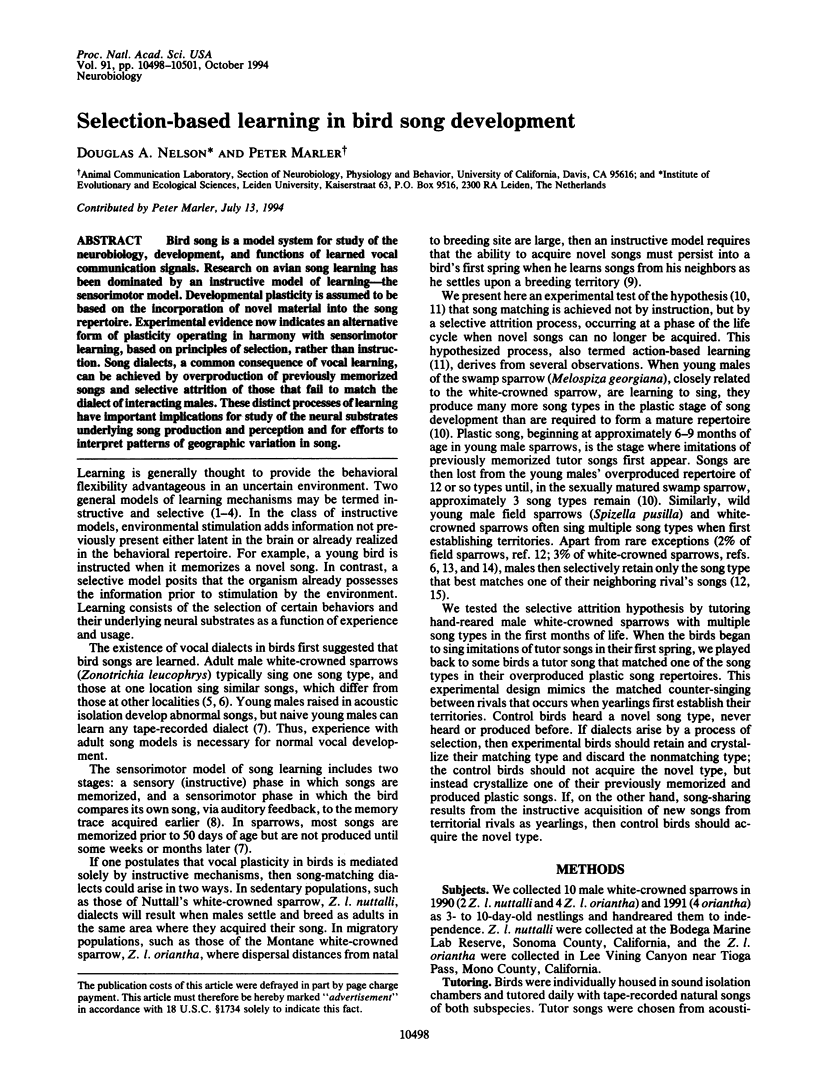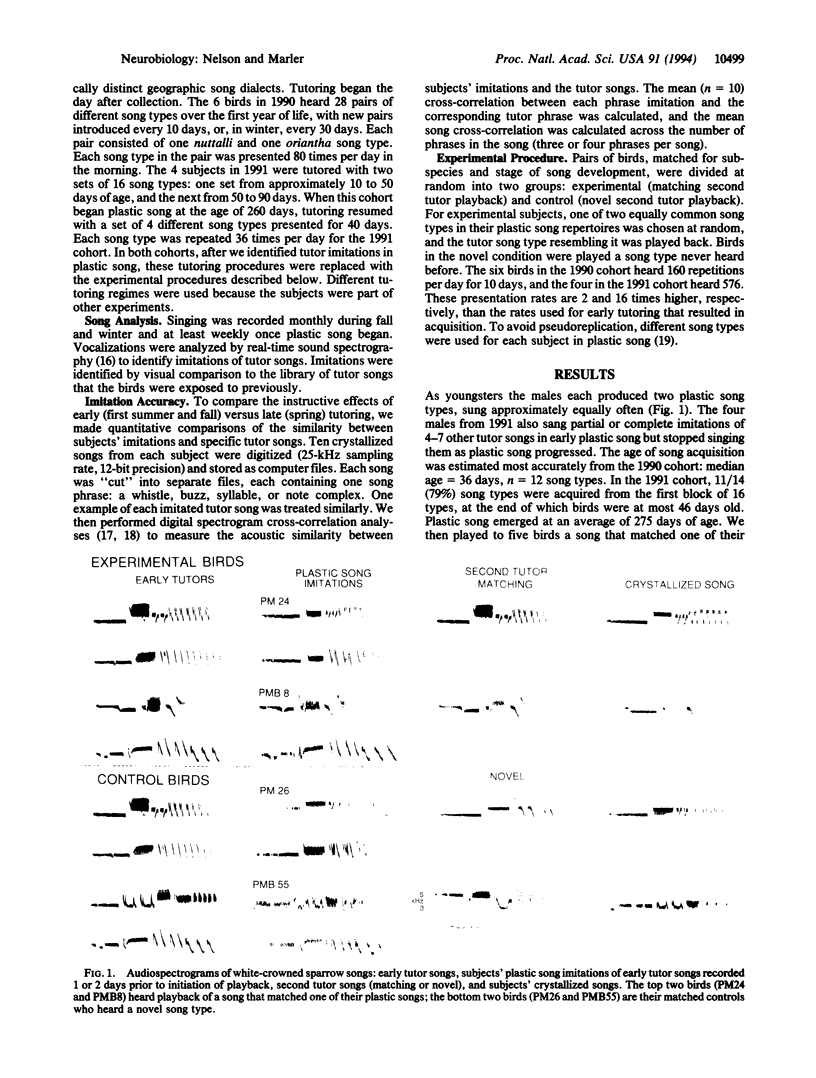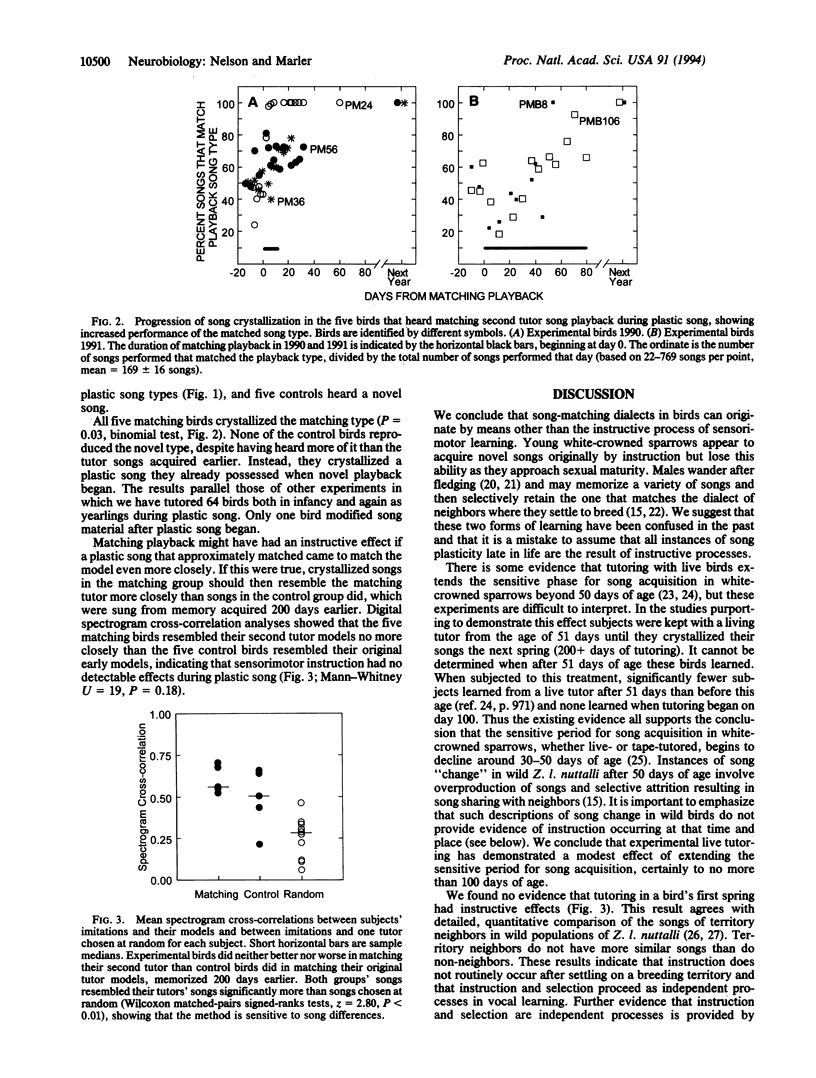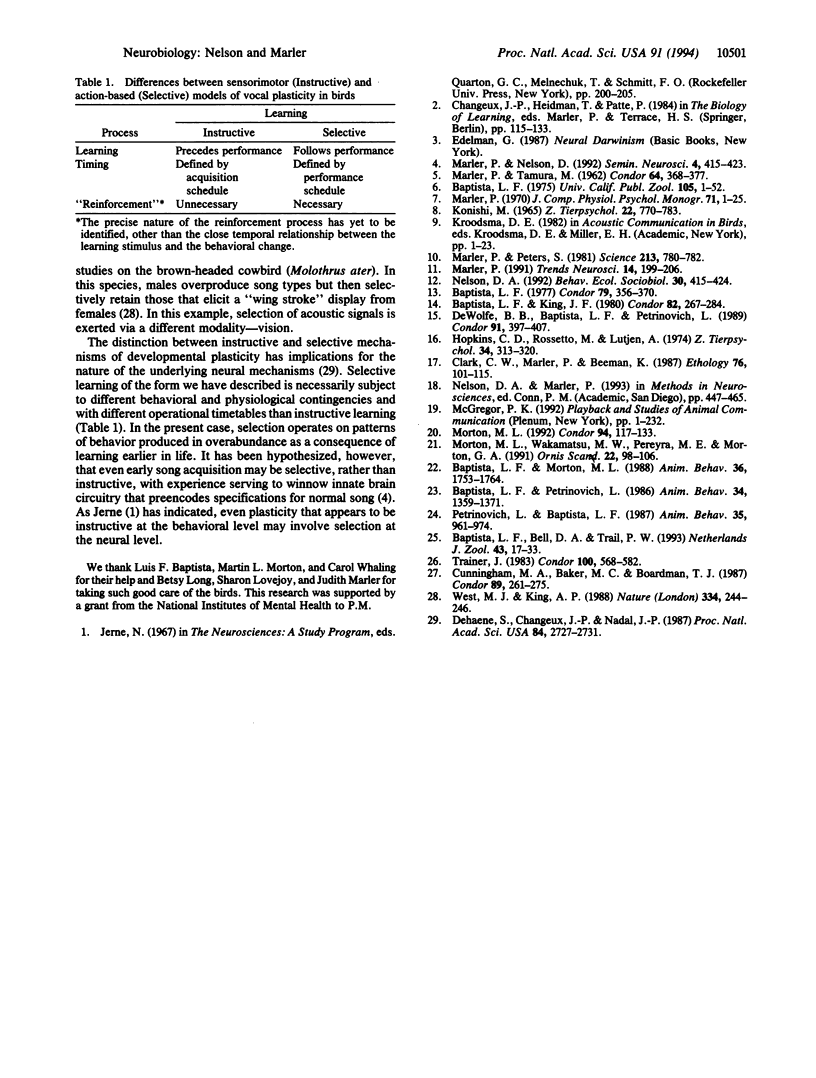Abstract
Bird song is a model system for study of the neurobiology, development, and functions of learned vocal communication signals. Research on avian song learning has been dominated by an instructive model of learning--the sensorimotor model. Developmental plasticity is assumed to be based on the incorporation of novel material into the song repertoire. Experimental evidence now indicates an alternative form of plasticity operating in harmony with sensorimotor learning, based on principles of selection, rather than instruction. Song dialects, a common consequence of vocal learning, can be achieved by overproduction of previously memorized songs and selective attrition of those that fail to match the dialect of interacting males. These distinct processes of learning have important implications for study of the neural substrates underlying song production and perception and for efforts to interpret patterns of geographic variation in song.
Full text
PDF



Images in this article
Selected References
These references are in PubMed. This may not be the complete list of references from this article.
- Dehaene S., Changeux J. P., Nadal J. P. Neural networks that learn temporal sequences by selection. Proc Natl Acad Sci U S A. 1987 May;84(9):2727–2731. doi: 10.1073/pnas.84.9.2727. [DOI] [PMC free article] [PubMed] [Google Scholar]
- Konishi M. The role of auditory feedback in the control of vocalization in the white-crowned sparrow. Z Tierpsychol. 1965 Dec;22(7):770–783. [PubMed] [Google Scholar]
- Marler P., Peters S. Sparrows learn adult song and more from memory. Science. 1981 Aug 14;213(4509):780–782. doi: 10.1126/science.213.4509.780. [DOI] [PubMed] [Google Scholar]
- Marler P. Song-learning behavior: the interface with neuroethology. Trends Neurosci. 1991 May;14(5):199–206. doi: 10.1016/0166-2236(91)90106-5. [DOI] [PubMed] [Google Scholar]
- West M. J., King A. P. Female visual displays affect the development of male song in the cowbird. Nature. 1988 Jul 21;334(6179):244–246. doi: 10.1038/334244a0. [DOI] [PubMed] [Google Scholar]



